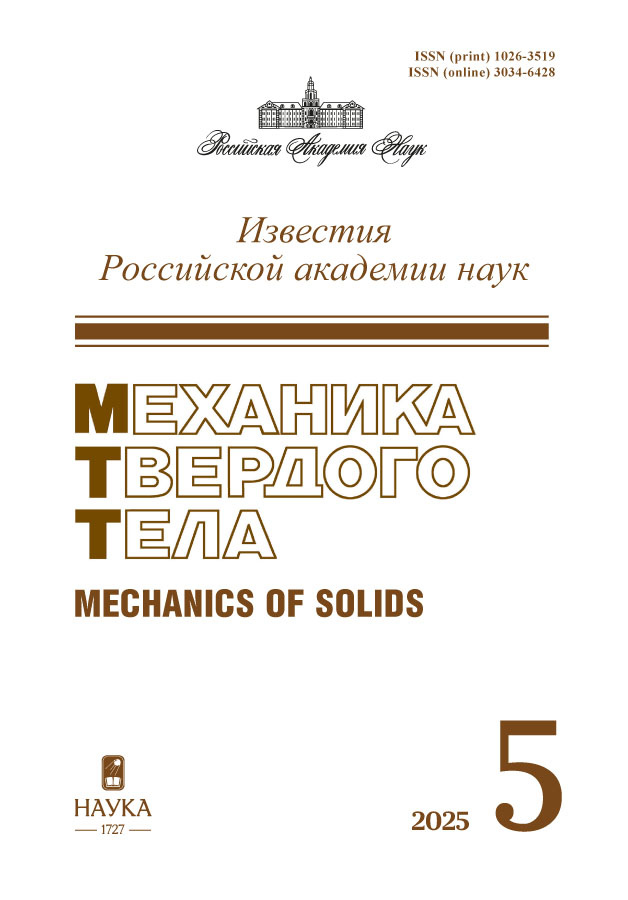编号 5 (2025)
Articles
Temperature dependences of elastic properties of cubic crystals of simple substances. Review
摘要
An review of the temperature dependences of the elasticity characteristics of cubic crystals of simple substances is given. It is shown that the general trend is a decrease in elastic modulus E, G and B with temperature due to the weakening of interatomic bonds due to thermal expansion of the crystal lattice. However, there are also anomalous dependencies, such as an increase in the shear modulus G with temperature, observed for BCC crystals of vanadium V, niobium Nb, tantalum Ta and FCC crystals of palladium Pd, platinum Pt. A common feature for the cubic crystals considered, except for BCC chromium Cr, is an increase in Poisson’s ratio n with temperature. The coefficient of elastic anisotropy A also shows a general upward trend, but for some crystals, BCC V, Nb, Ta and FCC Al, local minima are observed, and for BCC Cr and FCC Pd, maxima are observed.
 3-27
3-27


ON HOT FITTING OF A DISK ON A SHAFT TAKING INTO ACCOUNT IRREVERSIBLE DEFORMATION OF THE MATING PARTS OF THE ASSEMBLY
摘要
The evolution of temperature stresses under the conditions of the assembly process operation of hot fitting a thin disk onto a round shaft is calculated within the framework of the theory of temperature stresses. The materials of the mating assembly parts are considered elastic-plastic with a yield strength dependent on temperature. The moments of time and places of origin of viscoplastic flows in the materials of the assembly elements, the features of the development of plastic regions, their attenuation and collapse are tracked. The level and distribution of residual stresses over the assembly parts are calculated.
 28-48
28-48


The elastic constants of an isotropic medium can have arbitrary values
摘要
 49-70
49-70


Development of a complex method of studying filtration, fracturing and sand production processes in gas reservoirs of the Arctic shelf to determine optimal well operation parameters
摘要
 71-101
71-101


On one estimate of the critical value of the J-integral under normal compression around a crack-like defect in a thin adhesive layer
摘要
 102-108
102-108


Biomechanical Modeling of Osteotomies of the First Metatarsal Bone in Normal and Osteoporotic Conditions
摘要
 109-123
109-123


Shock waves in a one-dimensional semi-infinite hyperelastic rod
摘要
 124-143
124-143


On the Relationship Between Classical Mathematical and New Physical-Mathematical Theories of Metal Plasticity
摘要
 144-161
144-161


On the use of the Stieltjes integral for calculating of mechanical work in relation to adhesive contact
摘要
 162-184
162-184


On elastic-plastic deformation of a rectangular plate on a cylindrical surface under normal loading
摘要
 185-205
185-205


A COMPREHENSIVE APPROACH TO THE SEISMIC ANALYSIS AND DESIGN OF REINFORCED CONCRETE BUILDINGS AND STRUCTURES
摘要
 206-226
206-226


Computer simulation of the stress-strain state of a concrete gas pipeline in a swamp with compensators installed at its ends
摘要
 227-260
227-260











